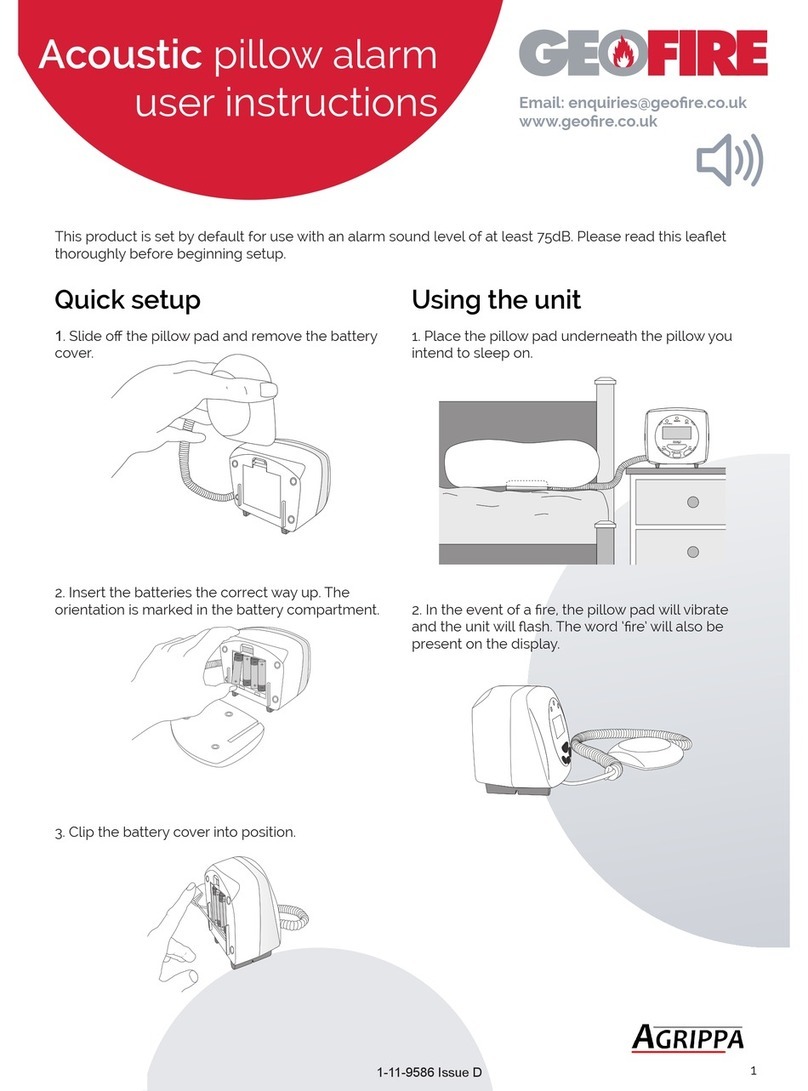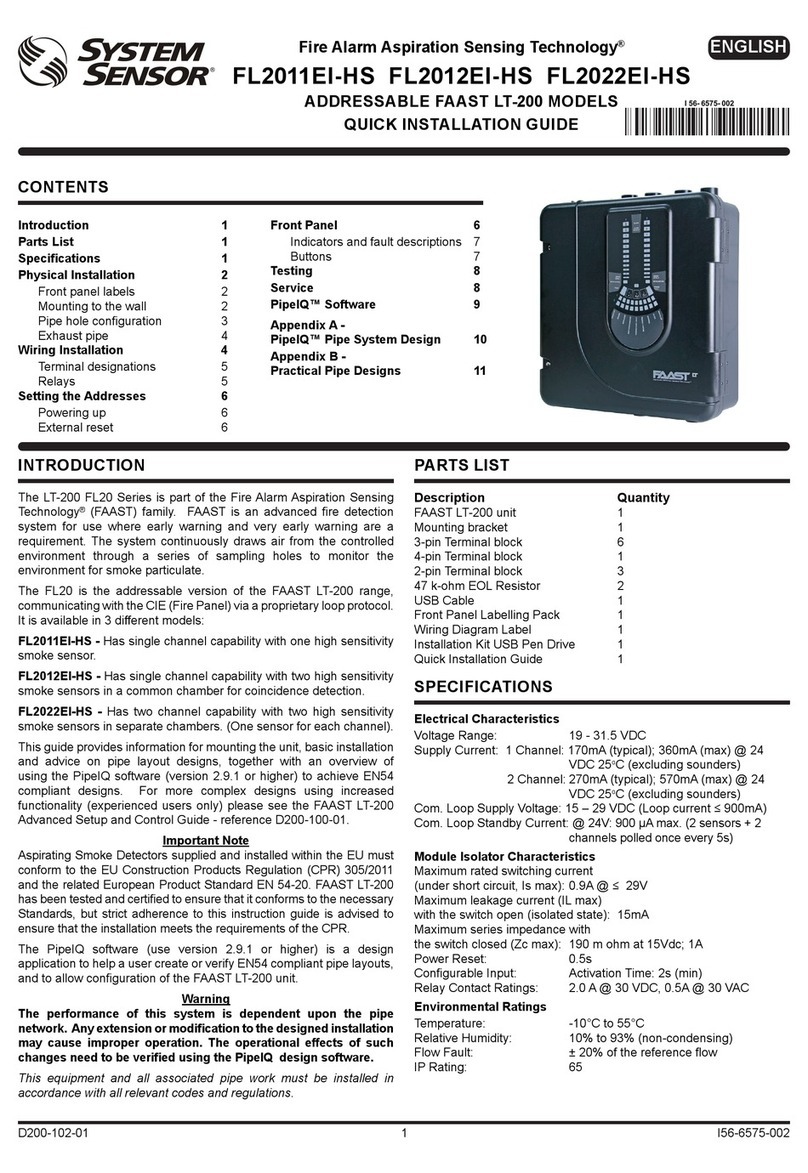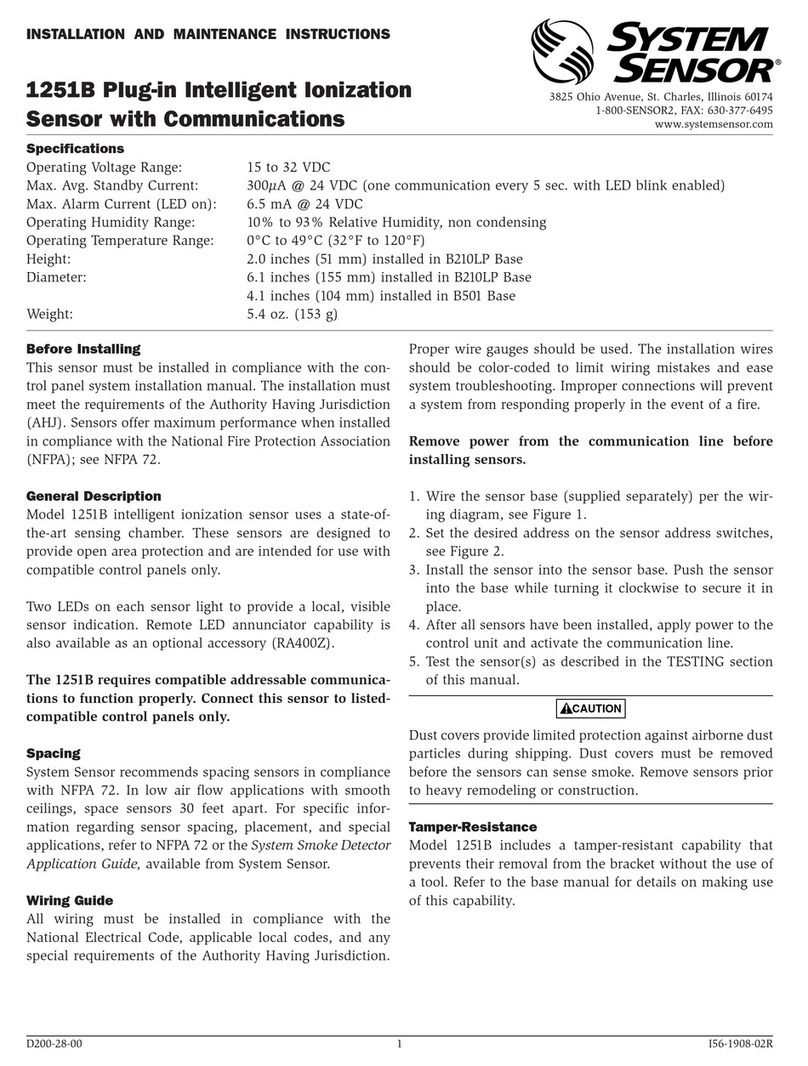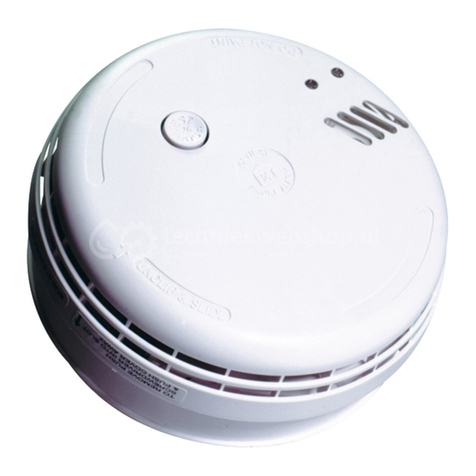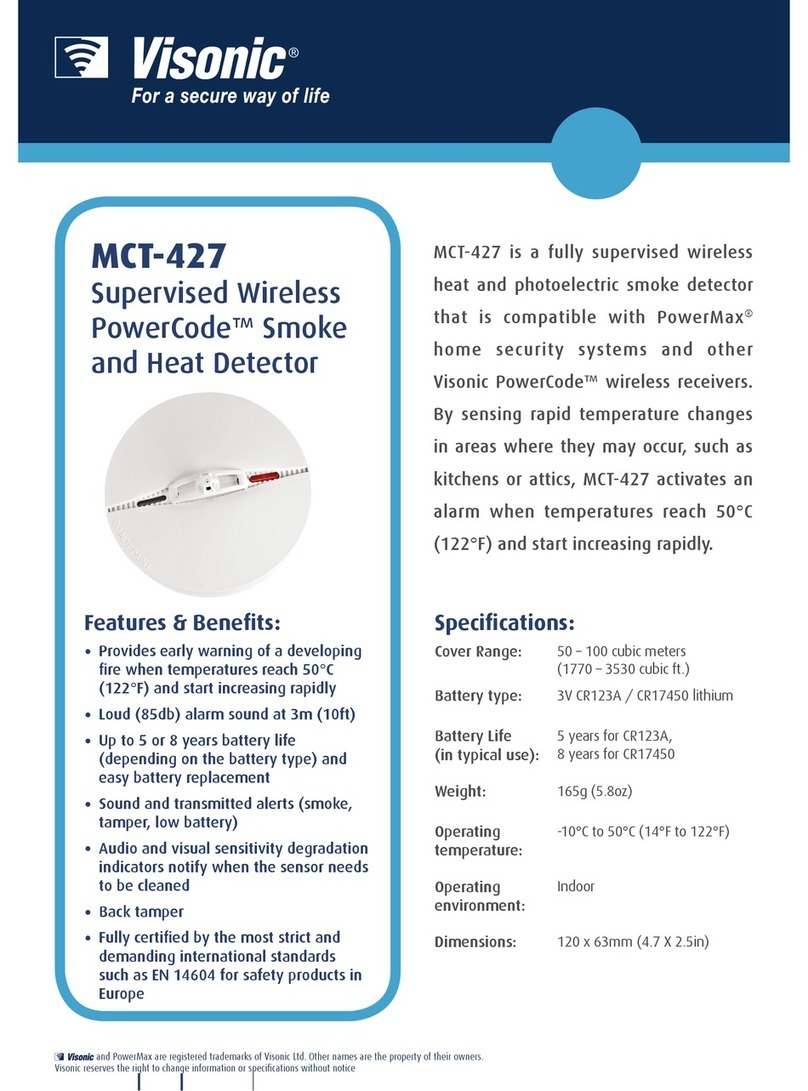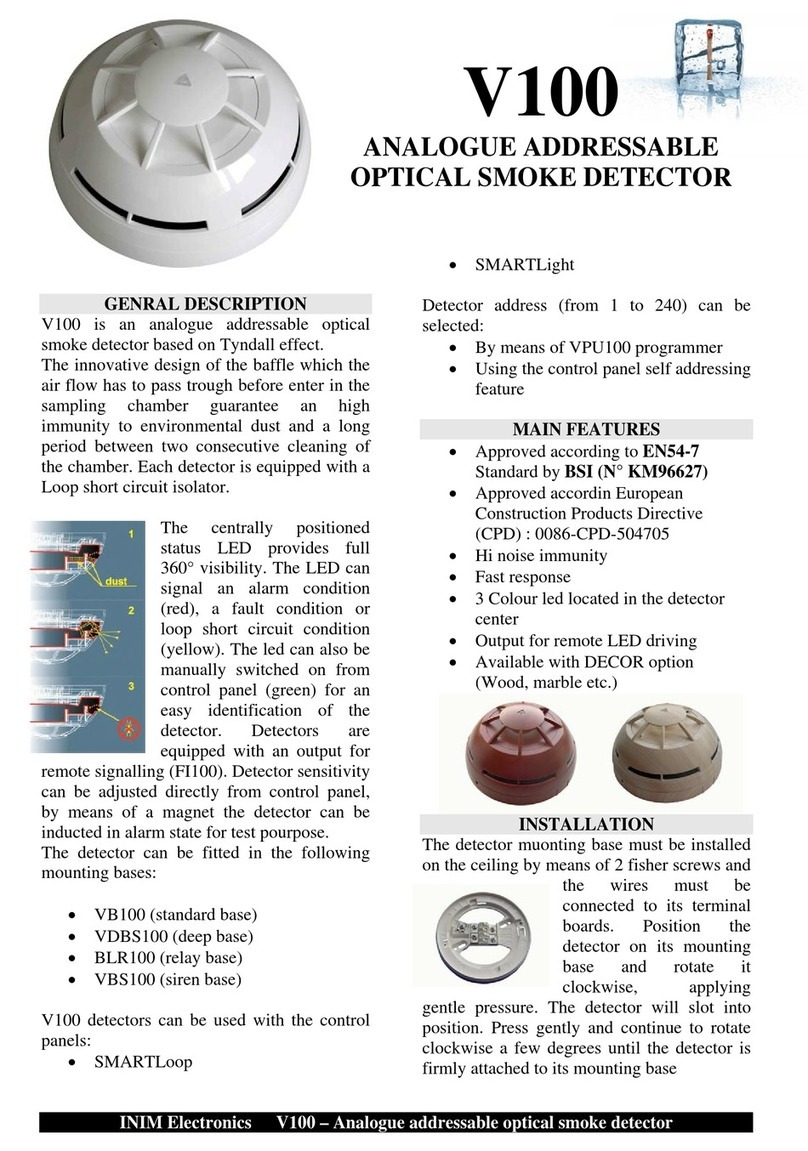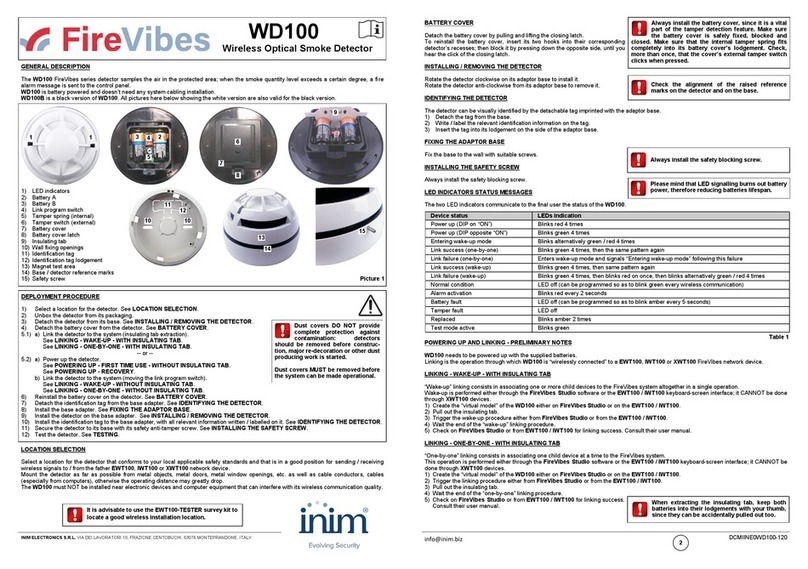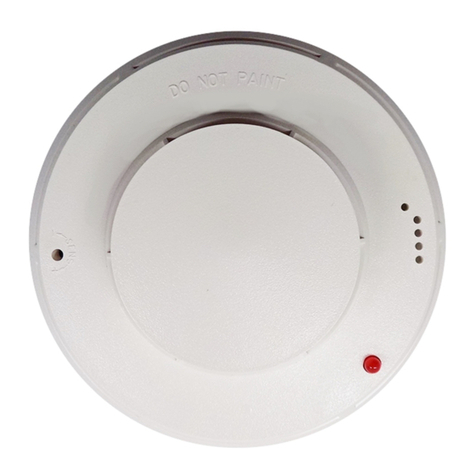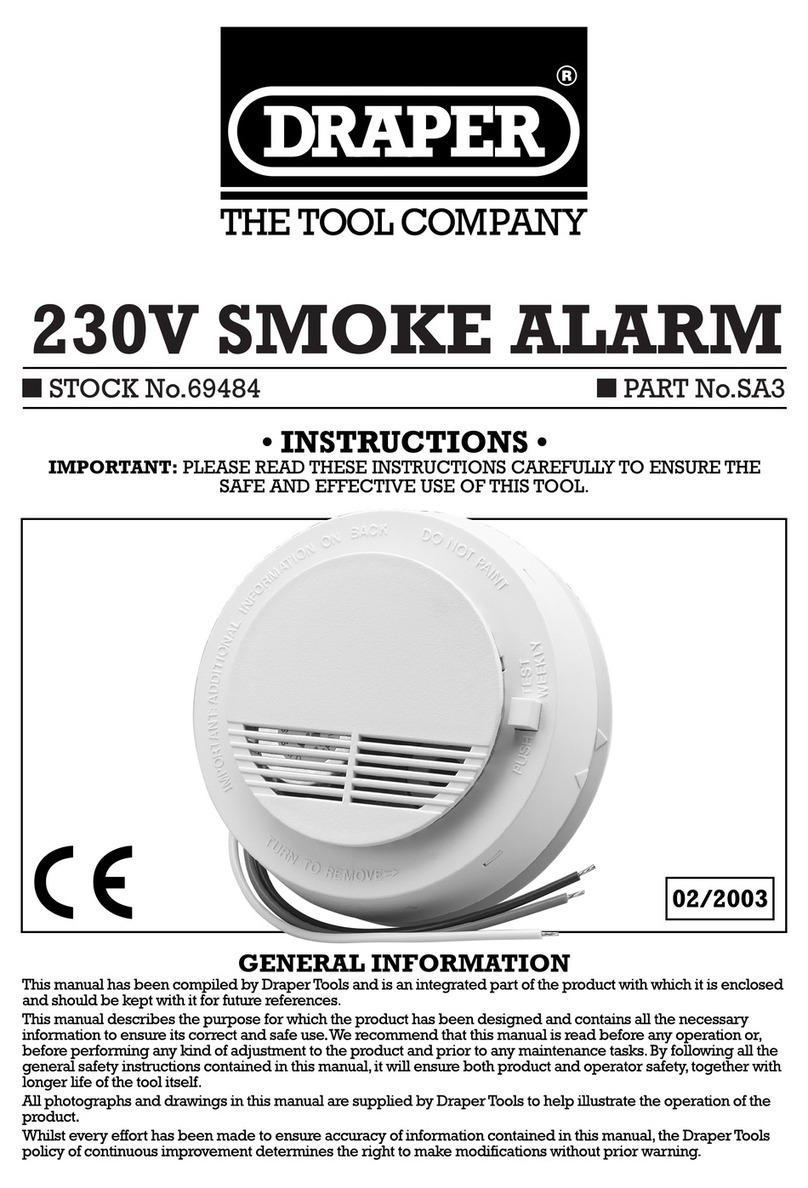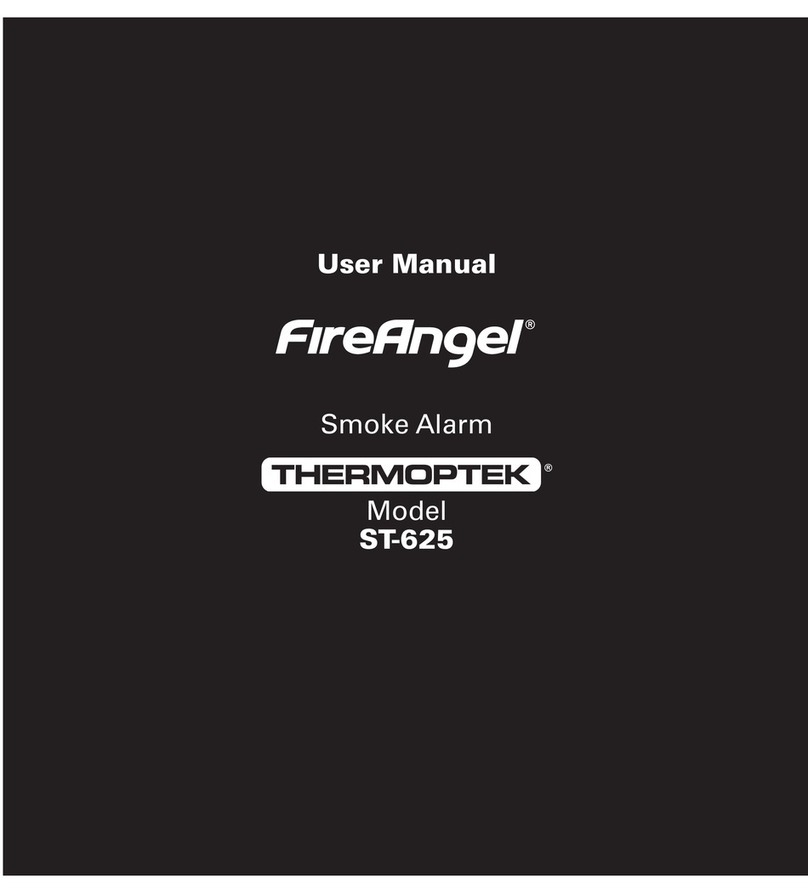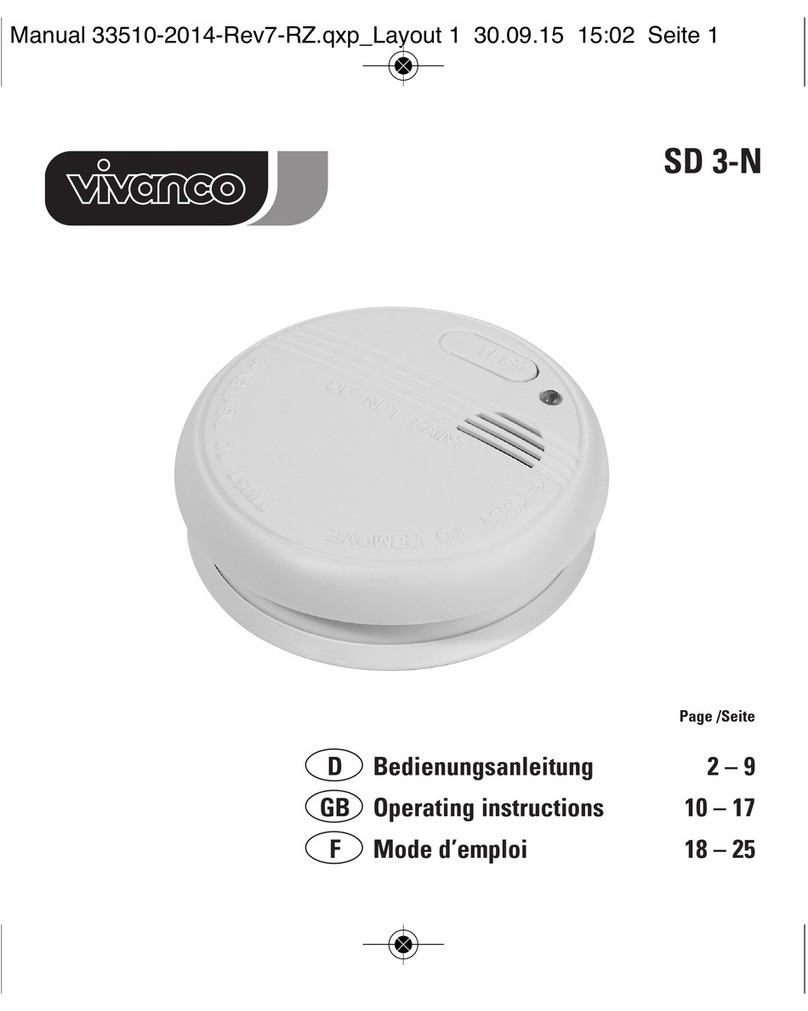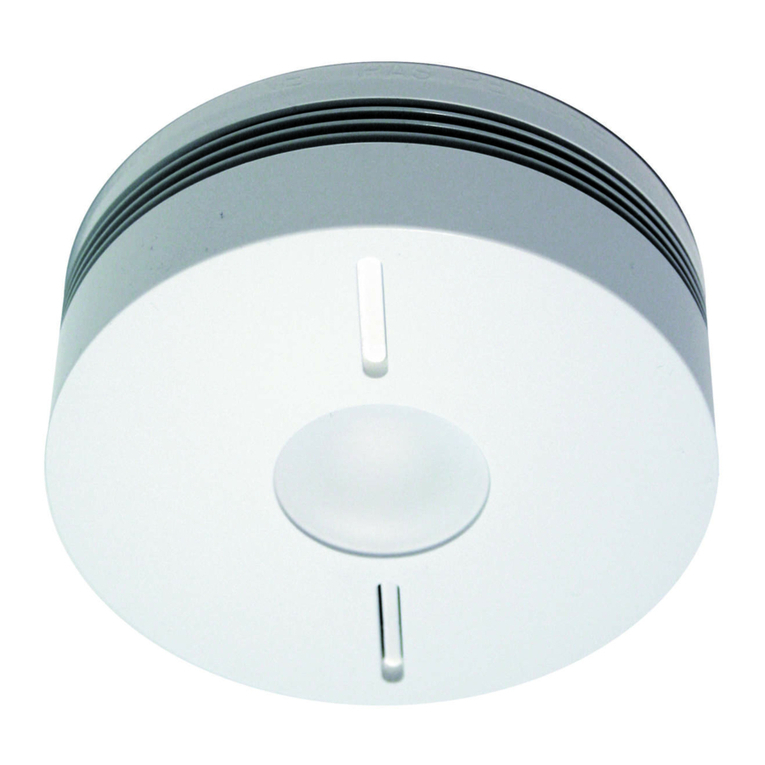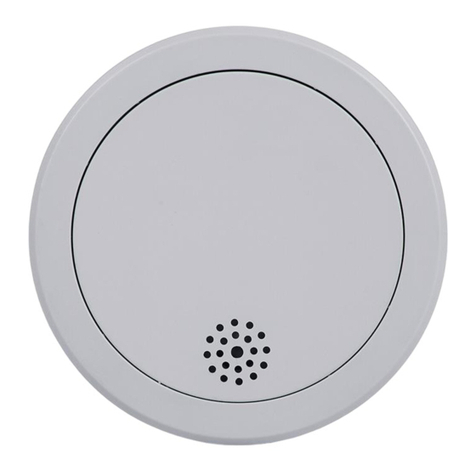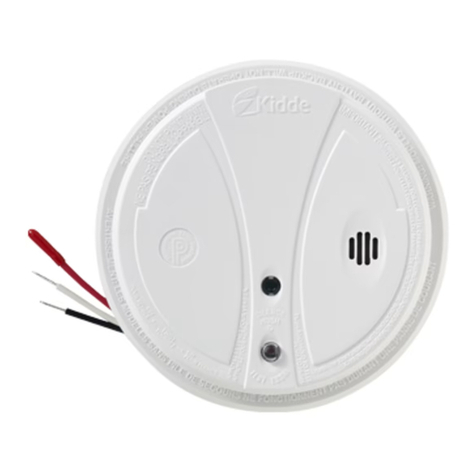
INIM ElectronicsV200 – Multicriteria smoke and temperature analogue addressable detector
V200
ANALOGUE ADDRESSABLE
MULTICRITERIA
SMOKE+TEMPERATURE
DETECTOR
GENRAL DESCRIPTION
V200 is a multicrteria Analog addressable
detector which combine an optical smoke
detector based on Tyndall effect and a
temperature detector. The combination of
these two principle make the detector suitable
also for that fire risk where Smoke detector
are not normally used (i.e. fires with high
flames but low smoke emission etc.) The
innovative design of the baffle which the air
flow has to pass trough before enter in the
sampling chamber guarantee an high
immunity to environmental dust and a long
period between two consecutive cleaning of
the chamber. Each detector is equipped with a
Loop short circuit isolator.
The centrally positioned
status LED provides full
360° visibility. The LED can
signal an alarm condition
(red), a fault condition or
loop short circuit condition
(yellow). The led can also be
manually switched on from
control panel (green) for an
easy identification of the
detector. Detectors are
equipped with an output for
remote signalling (FI100). Detector sensitivity
can be adjusted directly from control panel,
by means of a magnet the detector can be
inducted in alarm state for test pourpose.
The detector can be fitted in the following
mounting bases:
•VB100 (standard base)
•VDBS100 (deep base)
•BLR100 (relay base)
•VBS100 (siren base)
V200 detectors can be used with the control
panels:
•SMARTLoop
•SMARTLight
Detector address (from 1 to 240) can be
selected:
•By means of VPU100 programmer
•Using the control panel self addressing
feature
MAIN FEATURES
•Approved according to EN54-7 ed
EN54-5 Standards by BSI (N°
KM96628)
•Approved accordin European
Construction Products Directive
(CPD) : 0086-CPD-504706
•Hi noise immunity
•Fast response
•3 Colour led located in the detector
center
•Output for remote LED driving
•Available with DECOR option
(Wood, marble etc.)
INSTALLATION
The detector muonting base must be installed
on the ceiling by means of 2 fisher screws and
the wires must be
connected to its terminal
boards. Position the
detector on its mounting
base and rotate it
clockwise, applying
gentle pressure. The detector will slot into
position. Press gently and continue to rotate
clockwise a few degrees until the detector is
firmly attached to its mounting base
